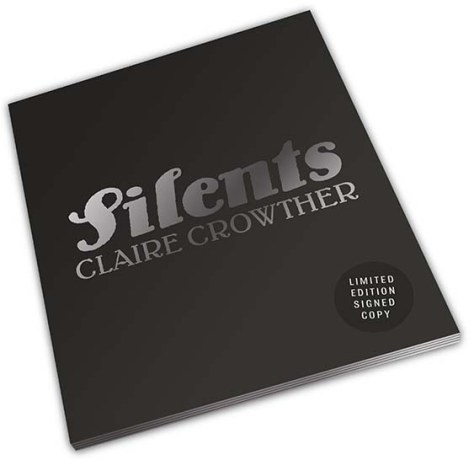Angles & Visions by Anthony Costello
– Reviewed by Steve Nash –
Anthony Costello’s Angles & Visions takes the world of cinema as its focus, inviting the reader to watch a biopic of sorts: the story of a life spent enthralled by the silver screen. The book is presented in five celluloid-inspired sections: Homage, Ambiance, Character Study, Ambiguity, and Off Camera (with a prologue and appropriately playful credits sequence), but the poems are also given ample room to expand beyond the realm of film. ‘The Card Game’ gestures toward (many) broader questions at play beneath the intricate surface of the text. Here the rhythms of a poker game crest the 2 a.m. wave, the mind entering something of a trance, cutting into the deck just as the lyric register takes flight. Here, all connections seem possible, one could ‘tear the strip off Vegas’.
As each new poem emerges, the book reveals itself more and more to be a tribute to the image, not only the moving variety. The pleasures, and possible dangers, of the subjective gaze are encountered and knowingly merged, as in ‘Burlesque’:
Her arms aloft, three purple stickers
remain from 5 minutes’ teasing,
her body converging with Lola’s,
one of Meyer’s ultra vixens,
and the woman descending the steps
in Edward Hopper’s Summertime.
Costello utilises the machinic glare of the camera to frame biographical shorts, the sporadic nature of the cast of characters reflecting the many masks, costumes, and roles the poet has slipped into over the course his life. That’s not to suggest a general suspicion of the narrator, but rather an affirmation of the performative nature of being. This fragmentation is made explicit in pieces such as ‘Kaleidoscopes’ and the engagingly jittery ‘Speed-ometers’:
A jellyfish of trapped lights, or glow-worms –
Flat-lining under the dais of night;
(Clutch) brake. & Speed mimic the World
Outside moving like a boxer on meds;
Centers, Parks, Glassy Rides, The Car
A grief-bucket, a bubble of coral cries,
Shield.
There are some poems here that could have been reserved for the extras on the DVD menu: these works turn away from the detailed imagery and clever dialogue which characterise Costello’s script at large, but this is very much the director’s cut and despite the simplicity (and possible fan service) of poems such as ‘Continuity’, the indulgence supports the whole by revealing a further angle on the work’s creator. A deep loneliness pulses through the pictures here and the occasional asides to friends outside of the film reel are a comforting addition. The meagre glimpse behind the camera is particularly reassuring because Costello is a fine actor, and not all of the roles into which he throws his voice so fluidly are gleaming Hollywood saints. Take one stanza from ‘Jack the Ripper’:
I leave garlanded Soho
And follow the scent of Blake’s sick rose
Thru midnight streets.
I chart a course bequeath’d by Wren
and follow my nose East…smoke and meat.
I will take the image of God
But clothing shall be my cruelty.
Weak in courage is strong in cunning.
I step out of a Hansom Cab. And sniff the air.
The poet, like his voice, is a salamander, slipping between the fractures in the speech. Titles such as ‘The Shoes that Fit the Man’ are fitting taglines for a director such as Costello, a poet with a thousand faces (not all of them heroic). Angles & Visions is a treatise on looking, on seeking something too illusory to catch in freeze frame. Little wonder then that he tells us in ‘Missing in Action’:
I arranged a meeting with myself
but didn’t turn up.
The poem meticulously unravels the act of watching through the lens of the panoptic gaze, and once again Costello creates a useful metaphor for his own project:
If I ran back to the meeting point
my scenes along the sois
– bunting-strewn, congested –
could then be filmed
from a mid-field position
of panoptic surveillance –
the horror in seeing someone
who looked like me
in a case of mistaken identity…
The speaker gazes on possible alternative versions of himself, but the image of Bentham’s Panopticon adds a filter of course: those under surveillance are unable to tell who (if anyone) is watching them. The potential for surveillance becomes more powerful than the act of watching itself. The writer is enigmatic here. We glimpse masks, characters, and angles, but the Costello behind the camera is as elusive as Norman Taurog.
Angles & Visions may be catalysed by cinema but it certainly is not restrained by it. In ‘On Becoming Glenn Ford’ the real commonality of these poems is revealed explicitly by Costello:
…or Glenn Ford
stepping on the verandah
to strike a match
and blow the clouds of his evening pipe …
… thinking of nothing …
… then …
thinking of becoming an actor
… then …
thinking of nothing in particular at all
These poems delight in watching, muse over being watched, over the many roles we inhabit, and all of them delight in space. They are understated but with room to breathe, to develop, and to be viewed from different angles at different speeds.





